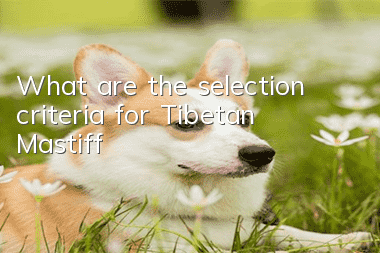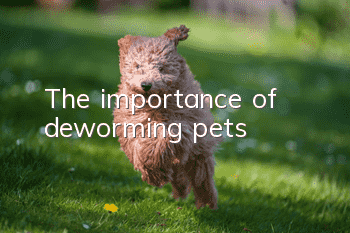What are the selection criteria for Tibetan Mastiff?

Tibetan Mastiff (Mark: do khyi, meaning tethered dog, English: Tibetan Mastiff), also known as Tibetan Mastiff, Tibetan Mastiff, Songfan Dog, and Cang Er Dog. Tibetan Mastiff is produced in the Qinghai-Tibet Plateau. The Tibetan Mastiff is tall, well-proportioned, strong, slightly rough, with a large head and wide forehead, slightly rounded parietal bones, and drooping ears, forming an inverted triangle shape. The Tibetan Mastiff is also a unique dog breed in my country, and its breeding market is also very active. Because the Tibetan Mastiff has rich connotations in my country's national culture, many countries are also keen to raise Tibetan Mastiffs as pets, so it is also difficult to find Tibetan Mastiffs in the market. , so if you want to buy a Tibetan Mastiff of good quality, you must understand the Tibetan Mastiff selection criteria.
Tibetan Mastiff
1. Standards of Tibetan Mastiff
A good Tibetan Mastiff should have a dignified expression, its eyes should be almond-shaped or triangular, and the eyelids should be naturally attached to the eyeballs. The Tibetan Mastiff's upper lip should be close to the dog's palate and hang slightly, while the lower lip should not hang. The Tibetan Mastiff's body height should be between 60 and 72 centimeters, and its weight should be between 45 and 70 kilograms. The coat color of the Tibetan Mastiff should be mainly black. Yellowish brown is allowed above the eyes, low on the legs, inside the tail, muzzle and other parts. White spots on the chest and slight white on the claws are allowed. Yellowish brown spots above the eyes are allowed. Blocks (four eyes) are also allowed; other mastiffs such as yellow (brown-red), white, and wolf blue can be selected according to personal preferences.
2. Judgment of Tibetan Mastiff
As a unique dog breed on the Qinghai-Tibet Plateau in my country, the Tibetan Mastiff should have the characteristics of strength, bravery, nobility, and self-confidence. These are the basic qualities that an excellent Tibetan Mastiff should possess. An excellent Tibetan Mastiff, under the premise of conforming to the characteristics of the breed, should have a strong body, a well-proportioned structure, well-developed muscles, bright eyes, strong teeth, normal limb development, thick and shiny coat, no defects or diseases in the body structure, and a good gait. It is strong and powerful, light and free. When walking quickly, the hind limbs have a unique shuffling look. When walking when viewed from the front, the limbs on the same side should be in the same straight line; when viewed from the side, the front and rear limbs should cross before walking. Regardless of walking slowly or quickly, the Tibetan Mastiff should look at the owner or the front, not others. Dewclaws should be removed when the Tibetan Mastiff is young.
An excellent Tibetan Mastiff must also have excellent bloodline, that is: pure bloodline, complete pedigree record, good family breeding history, etc. These can confirm the pedigree of an individual Tibetan Mastiff through pedigree certificates, chip identification technology, DNA identification certificates, etc.
3. Choice of Tibetan Mastiff
When purchasing an adult Tibetan Mastiff, you can refer to the Tibetan Mastiff’s evaluation criteria to make your selection. The author recommends buying young mastiffs between 3 and 5 months old. Tibetan mastiffs at this period are not too ferocious. They can quickly get along with their owners and easily establish a rapport with them. Purchase thisWhen buying, you should also understand the quality of the parents and grandparents of the young mastiff you want to buy, and find out whether the young mastiff you buy is really born from a breed of mastiff. When choosing a mastiff, you should carefully observe whether the young mastiff's eyes are bright (don't buy those with eye mucus or moist and tearful eye circles), whether the nose is moist, whether the anus is clean, whether the mental state is good, whether the walking is normal, what the appetite is, and what the posture is like. etc.
When purchasing, be sure to ask about the vaccination and deworming status of the Tibetan Mastiff to prevent buying a diseased Mastiff that is in the incubation period. Usually, the puppies are given oral anthelmintics when they are 30 days old. At 50 days old (already weaned), the dog is given the first injection of five-part vaccine (or six-part vaccine), and then the second injection is given every 15 days, and then every 30 days. Puppy vaccinations are completed after the third vaccination. Once the above conditions are met, it means that you have selected an excellent and healthy young mastiff.
- How to train a two-month-old puppy?
- Summer is hot, how to prevent heatstroke in dogs?
- How long is the longest life span of a golden retriever? What is the average life span of a golden retriever?
- Why does the dog have slippers in his mouth? How to stop it from chewing?
- How old can a golden retriever eat dry dog food?
- Common causes of coughing in puppies
- Why do dogs drool? These are the reasons why dogs drool
- What are the outstanding characteristics of Tibetan Mastiff?
- Can a pet dog take a bath when pregnant? Precautions for a pet dog during pregnancy
- Are Border Collies the most intelligent?



